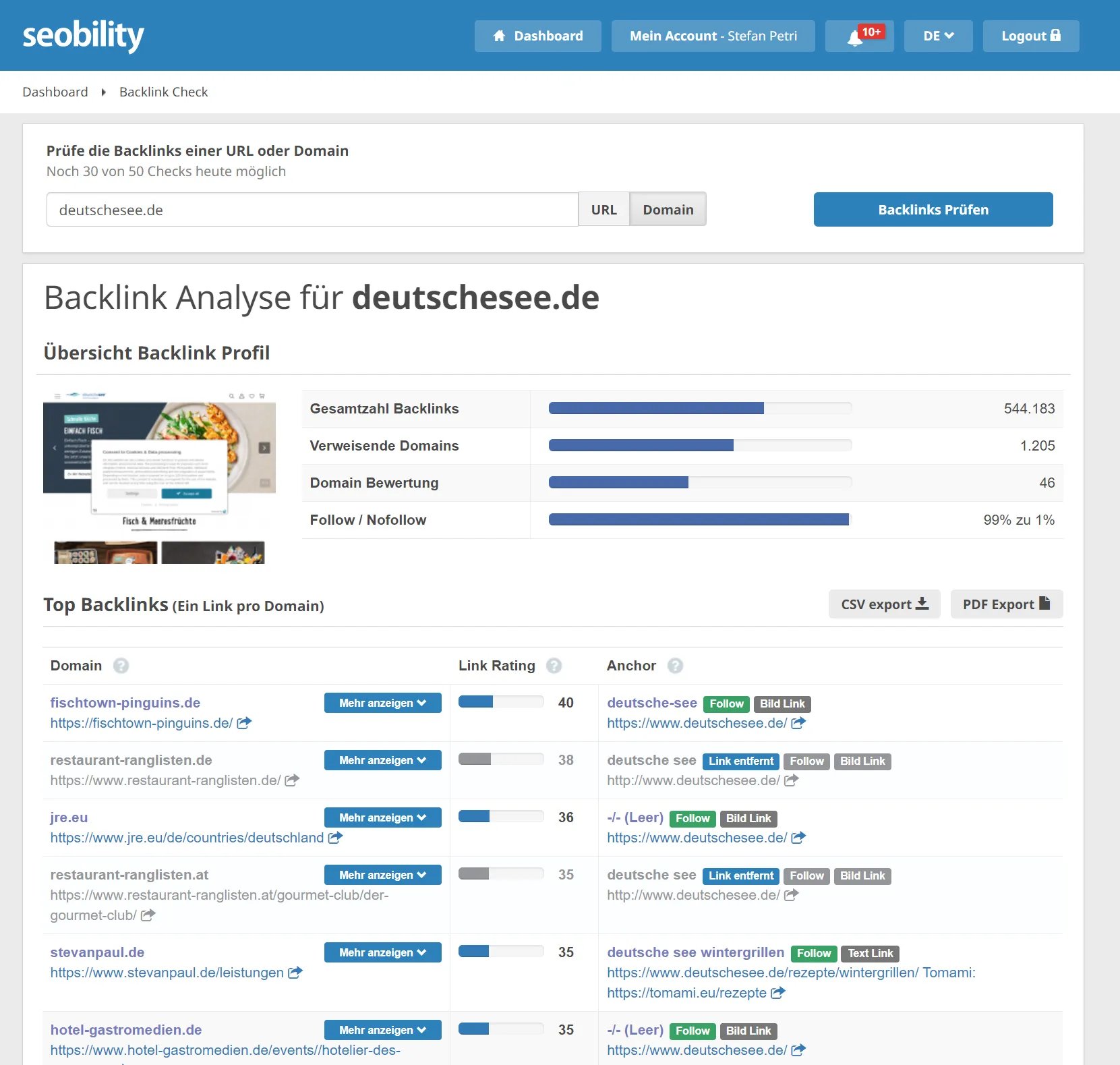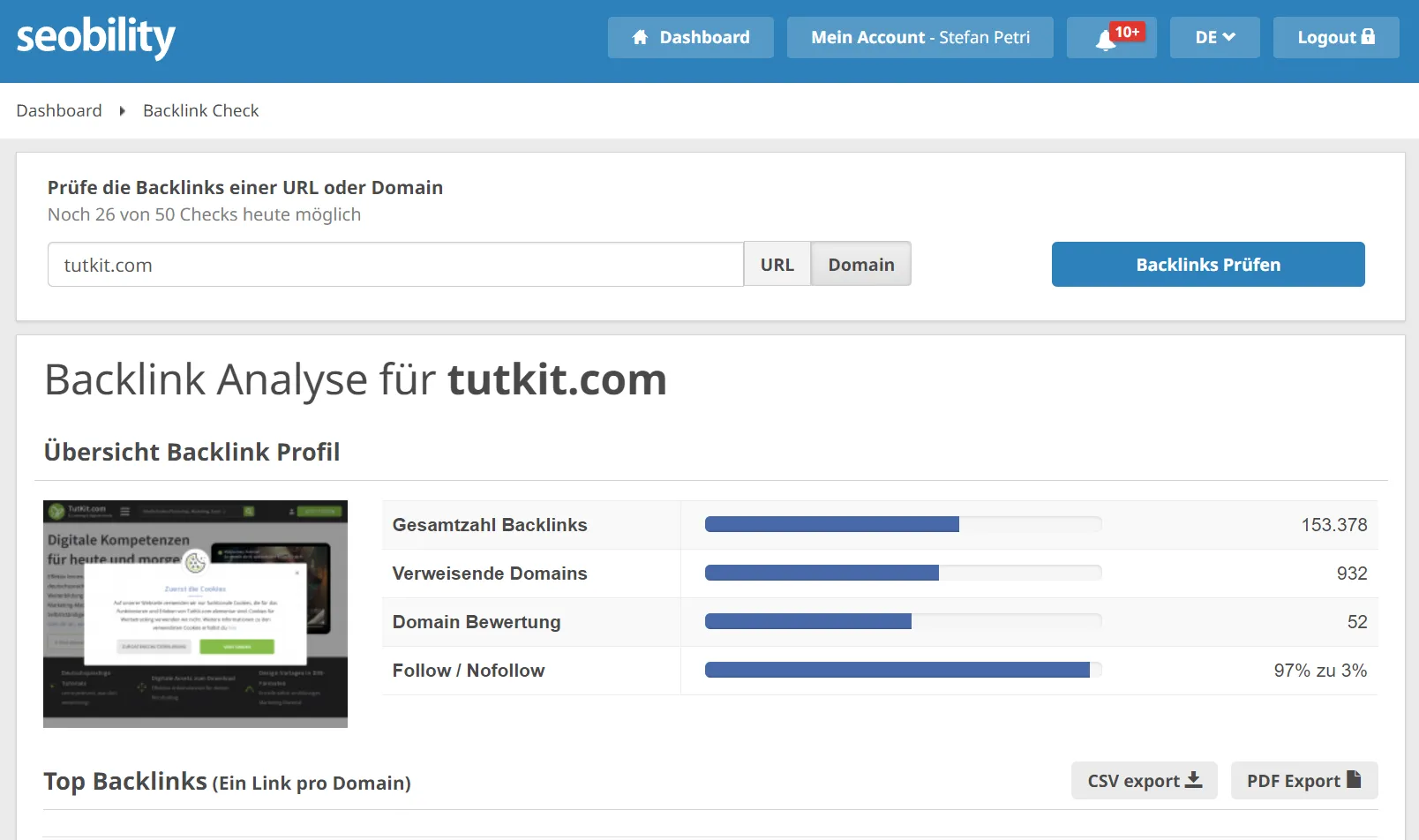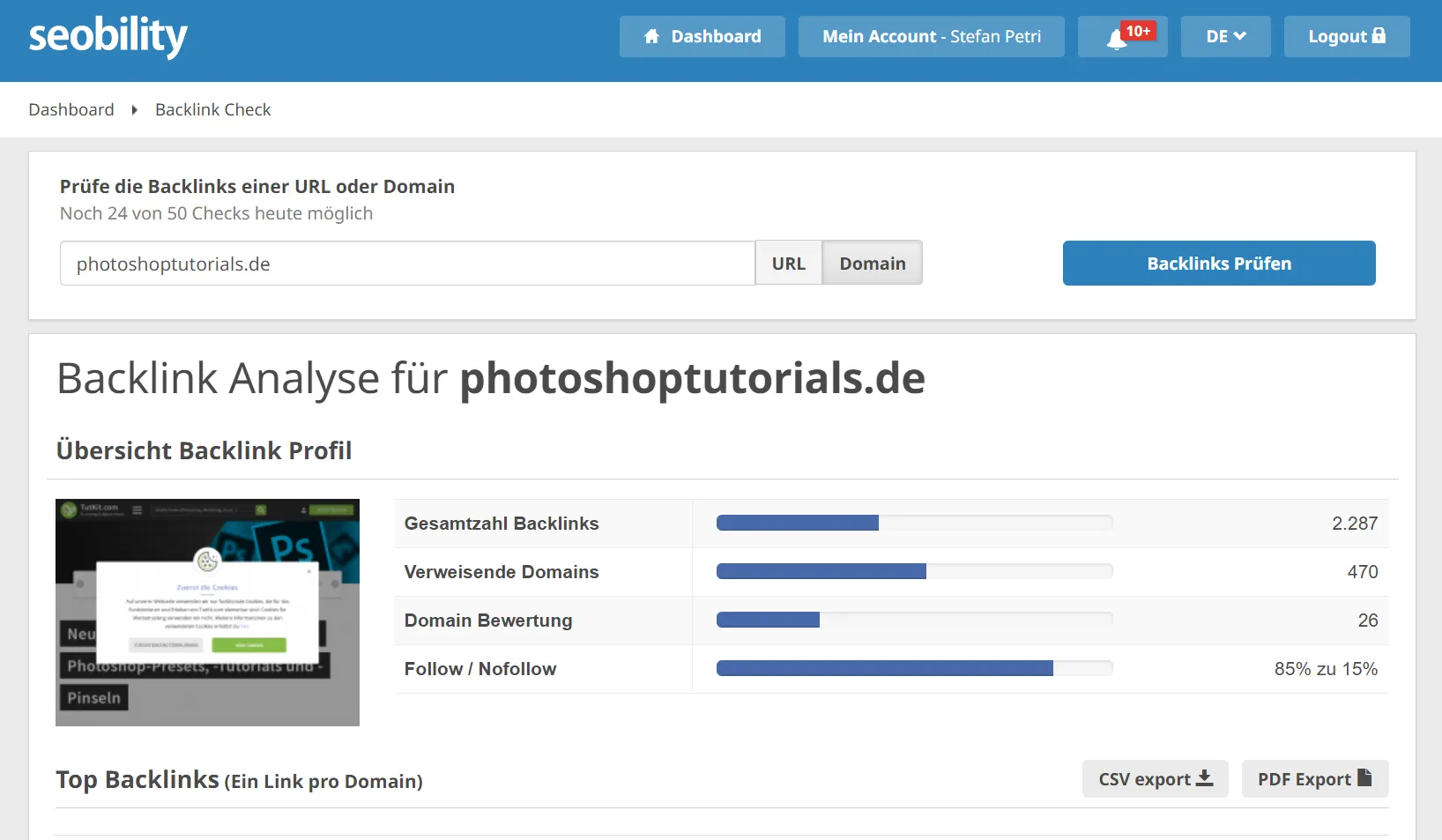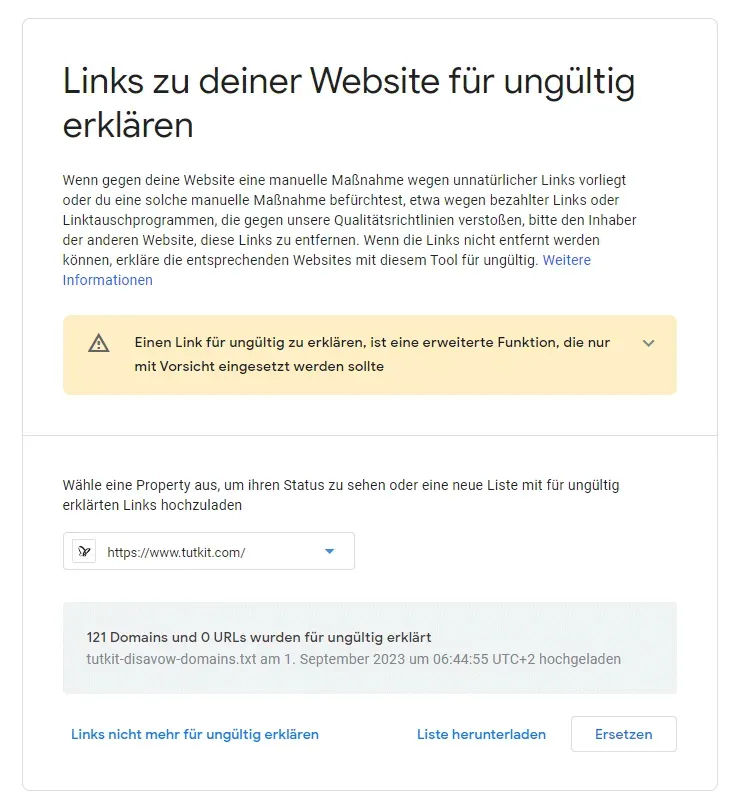One ranking factor is the authority of a domain. Google measures how many other websites link to your own in order to obtain a key figure for the externally measured relevance.
Domain authority can be determined with the Seobility backlink checker. The domain rating provides information about the domain authority.
New domains naturally have a very low score as they are hardly linked. Older domains that have enjoyed natural link building through referring websites therefore have a higher score. The decisive factor is not the absolute value, but the value in comparison to your own competitors.
- Our customer Fischkaufhaus.de achieves 24 percent using this tool.
- The competitor send-a-fish.de achieves 28 percent.
- The industry leader deutschesee.de leads the score in the competitor comparison by a clear margin with 46 percent.

When checking the backlinks of competitors who are doing much better than you, you can quickly see what tactics they have used to build links.
Now it would be Fischkaufhaus.de's homework to be linked to by related websites. This can be done by
- the provision of guest articles on food blogs
- Interviews with influencers in the food and/or fish sector
- Partner presentations on supplier websites etc.
- Partner presentations with link exchange at hotels, restaurants, etc.
- Sponsorship of themed events, with Fischkaufhaus.de appearing in the list of sponsors
- Press and PR work to obtain links from renowned newspaper websites.
Websites with high domain authority may also be off-topic and help greatly with their linking. This is especially true for press sites. This is also the reason why deutschesee.de is so strong. In 2017, they sued the VW Group in connection with the emissions scandal. This brought deutschesee.de a lot of digital press from all renowned press and media sites in Germany. From an SEO perspective, the lawsuit was definitely worth it.
It is important that the links are always placed in such a context that a user benefit is recognizable. Links from off-topic pages are generally counterproductive (with a few exceptions such as press pages). Hidden links somewhere in the footer do not help either and are more likely to do harm.
A backlink check also helps to identify links that consist of bad neighborhoods. For example, competitors may have commissioned links to your own site in a negative environment such as porn sites, Viagra landing pages etc.. These links can be marked as irrelevant for Google. Pure link lists are also counterproductive because they contain little added value for users.
TutKit.com has the following measurement results for the backlink check:

The domain authority is relatively high at 52, even though the domain is less than ten years old. And with 932 referring domains, we seem to have done our homework. Interestingly, our country-specific domain tutkit.com/en has an even higher domain authority of 55. But what exactly was our secret to link building:
- Via TrustedBlogs, you can find many bloggers who are willing to write about you for a small fee.
- We were regular guests on podcasts or in interviews, gave talks or were featured in other publications. Links to us were usually included in the application process.
- We link from our other own projects to TutKit.com.
- We used the link strength of archived projects and set up redirects to TutKit.com to tap into the link juice. One example is 3dmax.de ... a domain that used to run a relatively active website. When the operators ended the project, we were able to obtain the domain, which had 400 backlinks from 71 referring domains, at a reasonable price. We then set up a redirect to the 3D category of TutKit.com. We did the same with photoshoptutorials.de (2,287 backlinks from 470 referring domains!) and a few other projects that we had managed ourselves in the past.

It would also be conceivable to integrate the PSD forum into TutKit.com in the coming years. This would allow us to tap into the entire link juice of PSD in order to further support TutKit.com as a whole, which should then increase the online visibility of our product content. The only disadvantage would be a possible softening of our core content, because a lot of nonsense content and data garbage would be added by the forum. If the forum is really dead at some point because there are hardly any new posts, we could also consider switching it off and setting up redirects to TutKit.com - without taking over the old forum content.
Bad Neighborhood: Remove or get rid of unwanted backlinks
If you check the backlinks and you have the feeling that not all links are useful for your offer, you need to get rid of this bad neighborhood of backlinks. Here's how to do it:
Identify bad links: Analyze the list of inbound links and identify those that come from low-quality, spammy or harmful websites. For example, these could be sites associated with illegal content, gambling, drug sales or other inappropriate topics. Also view the list in comparison with your most important competitors. Here, for example, it is noticeable that both our own portal TutKit.com and many other websites have nonsensical links from pure domain lists that are placed somewhere on dubious sites with .pw TLDs, for example. These strange links have also been discussed in other specialist forums . What you can do about these bad neighborhood links is explained here in the overview:
Removal of harmful links: If you have identified harmful or low-quality links, try to remove these links. You can contact the webmasters of the websites in question and politely ask them to remove the links. You will often find a contact address or a contact form on the websites.
Create quality content: Focus on creating high-quality and relevant content on your website. The better your content is, the more likely high-quality websites will link to you.
Natural link-building strategy: Work on a natural link-building strategy where you create high-quality content that others will want to share and link to.
Backlink monitoring: Use tools regularly to monitor your backlinks and make sure no new harmful links appear.
The first measure is to write to the webmasters of the sites in question and ask them to delist. This will be difficult with such automatically generated sites from Palau or India.
Use the disavow tool: The end-boss measure is to have these links declared as invalid so that Google will no longer consider them. This can be done via the Google Search Console with the Disavow tool. This tool allows you to tell Google which links you no longer want to associate with your website.
We do it every few years for our projects:

But rest assured that Google already recognizes on its own that these domain lists are just spam and have no real value. If it still gets out of hand, we recommend using the disavow tool (you must be logged in):
https://suche.google.com/suche-console/disavow-links


